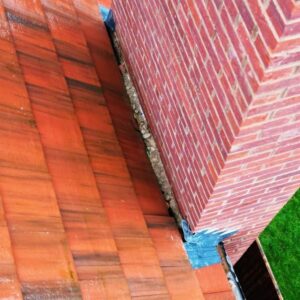
Avoid Costly Mistakes: Snagging & Home Inspections in Yorkshire
Avoid Costly Mistakes: The Importance of Home Inspections in Yorkshire BookOnline Now When purchasing a newly built home, it is
Latest News

Key Takeaways:
In the bustling property market of the United Kingdom, the concept of “snagging” plays a pivotal role in the transition to new homeownership. Snagging, a term intimately familiar to those navigating the construction and real estate sectors, refers to the detailed process of identifying and listing any unfinished tasks, defects, or issues within a newly constructed home. This meticulous inspection aims to ensure that every corner, crevice, and component of a new build meets the stringent standards of quality and safety expected by homeowners and regulatory bodies alike.
The importance of a comprehensive snagging list cannot be overstated. For many, purchasing a home is the largest investment they will make in their lifetime. Ensuring that this investment is sound, secure, and free from potentially costly or hazardous defects is not just a matter of financial prudence but also of personal safety. A snagging list serves as a critical checkpoint, a final review before the keys are handed over, guaranteeing that the property is not only aesthetically pleasing but also structurally sound and functionally reliable.
In the UK, where new housing developments are increasingly common to meet the growing demand for homes, snagging has become an essential part of the home-buying process. It bridges the gap between the builders’ completion of construction and the homeowners’ expectations for a finished product. By identifying issues ranging from minor cosmetic blemishes to major structural faults before moving in, homeowners can avoid the inconvenience and expense of repairs further down the line. Furthermore, a well-documented snagging list provides a clear and actionable guide for builders to make necessary corrections, ensuring that the home not only meets the legal standards set forth by building regulations but also the personal standards of the new occupants.
As we delve deeper into the significance, components, and execution of an effective snagging process, it becomes clear that this is not just a cursory step but a fundamental practice that safeguards the interests and wellbeing of all parties involved in the creation and inhabitation of new homes.
A snagging list is an essential document for anyone moving into a newly built home in the UK. It serves as a comprehensive checklist that records and categorises defects or issues within a property, covering a wide spectrum from minor cosmetic problems to major structural faults. The primary purpose of this list is to ensure that all aspects of the new home meet the high standards expected by the homeowner, as well as comply with the stringent quality and safety regulations enforced by the construction industry.
Snagging encompasses a detailed examination of the entire property. This includes, but is not limited to, inspecting paintwork, checking the functionality of fixtures and fittings, ensuring electrical sockets are properly installed, verifying the smooth operation of doors and windows, and assessing the integrity of structural elements. By meticulously identifying everything from the smallest paint drip to potential issues with the foundation, a snagging list ensures that no stone is left unturned in the quest to secure a safe and flawless home.
The significance of a snagging list lies in its dual focus. While major defects, such as issues with the roofing, plumbing, or electrical systems, could pose immediate risks to safety and require urgent attention, minor defects, though seemingly insignificant, can affect the overall satisfaction with the home and may lead to more substantial problems over time. For example, a small leak if left unchecked, could result in water damage, mould growth, and eventually necessitate major repairs.
Ultimately, a snagging list is a crucial tool in the handover process from builder to homeowner. It provides a formal mechanism for reporting defects that need to be rectified, thereby ensuring that the property aligns with the promised specifications and quality. For builders, it offers a clear guide to the final touches needed before a project can be considered complete. For homeowners, it provides peace of mind, knowing that their new home has been thoroughly vetted and any issues will be addressed promptly, ensuring their investment is protected and their living environment is secure and enjoyable.
In essence, a snagging list bridges the gap between the completion of construction and the fulfilment of the homeowner’s expectations, guaranteeing that new builds are not just habitable, but perfectly attuned to the standards of modern living.
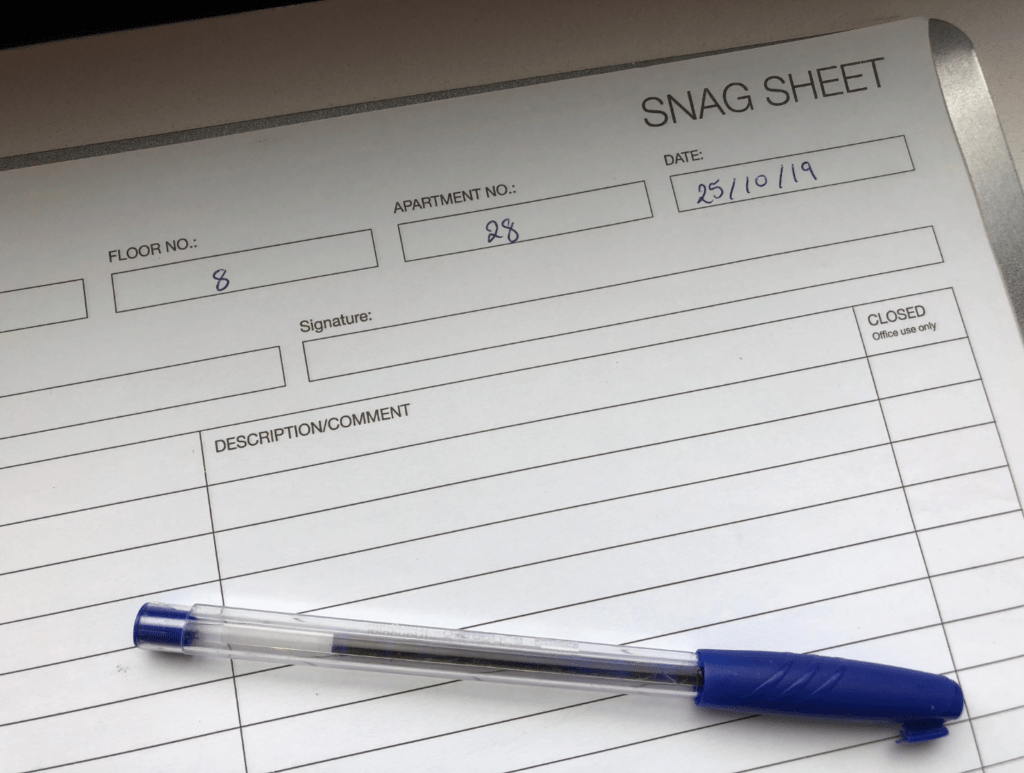
When stepping into the world of new build homes, understanding the distinction between major and minor snags is crucial for homeowners. This knowledge not only aids in prioritising repairs but also in comprehending the potential impacts on a home’s quality and livability.
Major snags are significant issues that affect the structural integrity, safety, or functionality of a new home. These defects require immediate attention as they can compromise the living conditions and may lead to costly repairs if not addressed promptly. Examples of major snags include:
The impact of major snags extends beyond mere inconvenience, potentially leading to hazardous living conditions and significantly affecting the property’s value.
Minor snags, on the other hand, are predominantly cosmetic issues that do not directly impact the safety or functionality of the home but may affect its aesthetic appeal and overall satisfaction of the homeowner. While less critical, these snags still warrant attention to ensure the home meets the expected standards of finish and quality. Examples include:
While minor snags might seem negligible, they can accumulate, detracting from the overall quality and finish of the home. Addressing these issues promptly ensures the property remains aesthetically pleasing and maintains its value.
Distinguishing between major and minor snags allows homeowners and builders to prioritise repairs effectively, ensuring safety and functionality are addressed first without overlooking the importance of cosmetic details. By understanding these differences, homeowners can better navigate the snagging process, advocating for a home that is not only structurally sound and safe but also finished to the highest standards of quality and aesthetics.
Creating a comprehensive snagging list is a critical step in ensuring your new home meets all expected standards of quality and safety. This list will serve as your blueprint for identifying defects across various aspects of the property. Here’s a structured approach to help you cover all bases:
Creating a snagging list might seem daunting, but it’s a vital part of the home-buying process. This list not only ensures that your new home is safe and up to standard but also provides a clear guide for builders to rectify any issues, ensuring your new home is exactly as you dreamed it would be.

Identifying the optimal timing for conducting a snagging survey is crucial in ensuring that your new home is in perfect condition before you take ownership. The ideal time to undertake this inspection is a blend of strategic planning and understanding the construction and purchase process.
The most advantageous time for snagging is before the final completion and handover of the property. Conducting a snagging survey at this stage allows any identified issues to be addressed by the builder or developer before you move in, ensuring that your home meets all agreed-upon standards of quality and safety. This timing is crucial because it provides leverage—the completion of the sale may depend on these issues being resolved.
One of the primary challenges in snagging before completion is gaining access to the property. Builders may be hesitant to allow inspections before completion due to ongoing construction or policy restrictions. Here, negotiation and clear communication become key. Emphasise the benefits of early snagging, such as the ability to address issues promptly, reducing the need for post-move-in repairs that could be more disruptive and costly.
If pre-completion snagging is not possible, conducting a survey shortly after moving in is the next best option. While this timing might not be ideal, it still allows for issues to be identified and addressed under the builder’s warranty. Keep in mind, however, that distinguishing between pre-existing defects and damages that could occur during the move-in process may become more challenging.

When it comes to snagging in newly built homes, homeowners are faced with a choice: hire a professional snagging service or conduct the inspection themselves. Each option has its own set of advantages and challenges, making it essential to weigh them carefully before deciding.
Pros:
Cons:
Pros:
Cons:
Once you have meticulously compiled your snagging list, the next steps are critical in ensuring that the issues identified are rectified to your satisfaction. Here’s a guide on how to effectively use your snagging list to communicate with builders and ensure a smooth resolution process.
The snagging list is a powerful tool in ensuring your new home meets your expectations for quality and safety. By methodically presenting, negotiating, and following up on the issues identified, you can navigate the post-construction phase effectively, securing a home that is not only safe and sound but also a joy to live in.
Navigating the final stages of acquiring a new build home can be both exciting and daunting. Armed with a comprehensive snagging list, homeowners are empowered to ensure their new property is not just visually appealing but structurally sound, safe, and finished to the highest standards. The process of snagging serves as a critical bridge between the builder’s completion of construction and the homeowner’s expectations, facilitating a smooth transition to a home that meets all envisioned quality and safety benchmarks.
The journey from compiling a thorough snagging list to the satisfactory resolution of identified issues underscores the importance of vigilance, clear communication, and informed negotiation with builders. By prioritising issues, maintaining open dialogue, and ensuring diligent follow-up, homeowners can significantly enhance their living environment and protect their investment.
While the prospect of conducting detailed inspections, identifying defects, and navigating repairs may seem overwhelming, it’s a fundamental step toward securing peace of mind in your new home. For those who may not have the time, expertise, or inclination to tackle this process alone, professional snagging services offer a valuable solution.
At HomeSnaggingUK, we understand the intricacies of snagging and are dedicated to ensuring your new home meets every expectation of quality and comfort. Our team of experienced professionals is equipped with the latest tools and a keen eye for detail, ready to uncover and document any issues that could compromise the integrity of your new build.
For all your snagging needs, contact us:
Let us help you transition into your dream home with confidence and assurance.

Avoid Costly Mistakes: The Importance of Home Inspections in Yorkshire BookOnline Now When purchasing a newly built home, it is
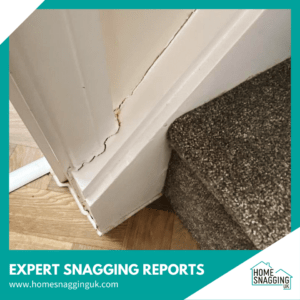
Home Inspections and Snagging: Must-Know Tips for Yorkshire Homeowners BookOnline Now For new homeowners in Yorkshire, the excitement of moving
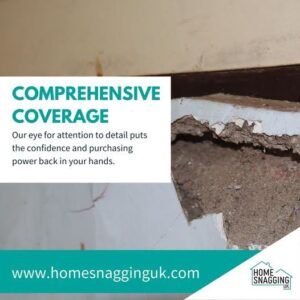
The Cost of Snagging Surveys in Yorkshire BookOnline Now For new homeowners in Yorkshire, snagging surveys are a crucial step
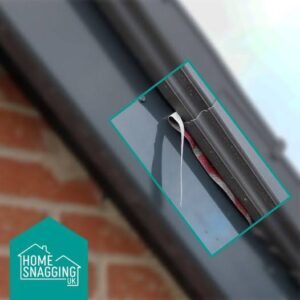
Navigating Home Inspections and Snagging for Your New Yorkshire Home BookOnline Now Purchasing a new-build home is an exciting milestone,

Why Snagging is Essential for Commercial Properties Snagging is a crucial step in the construction process, traditionally associated with residential

The Ongoing Importance of Maintenance After Snagging Moving into a new-build home is an exciting milestone, but ensuring that your
Barnsley
Beverley
Birmingham
Chester
Chesterfield
Coventry
Derby
Dewsbury
Doncaster
Grantham
Grimsby
Huddersfield
Hull
Huntingdon
Leeds
Leicester
Lincoln
Manchester
Mansfield
Newcastle
Nottingham
Peterborough
Rotherham
Scunthorpe
Sheffield
Shrewsbury
Stoke
Telford
Wakefield
Warwick
Wolverhampton
Worksop
York
We’re home snagging specialists with over 20 years of experience snagging new build homes. We identify construction defects, big or small, that your developer may have missed. We are fully qualified surveyors who work with our customers to make sure they get the perfect home.
© Home Snagging UK 2025
Website Maintained By Be My Social